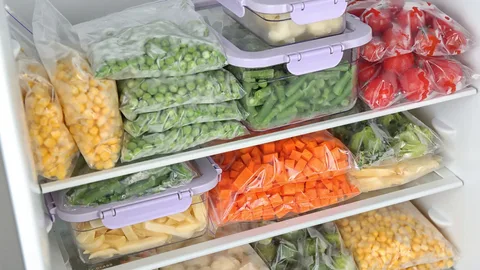Frozen foods have become staples in people’s homes these days. Virtually every freezer in the nation is filled with an array of conveniently packaged foods that are ready to use as needed. From raw meats, fruits, and vegetables to microwavable meals and snacks, people now depend heavily on these items to help make life easier. In some cases, those items even help people to eat healthier than they would otherwise.
Cleanliness and Safety in Frozen Food Manufacturing and Storage
Companies that produce frozen foods are under increasing pressure to meet consumers’ needs and expectations. They’re also up against a growing list of stringent safety regulations. Whether they’re making ice cream or operating a frozen burger factory line, they have to ensure their products are completely safe for human consumption. Certain factors are essential in this regard.
Cleanliness of Production Equipment
Keeping production equipment clean is one of the most important elements here. Regardless of the safety protocols food production companies have in place, debris and food particles are sure to build up in their machinery. Bacteria, parasites, and viruses are also likely to enter the mix. Because of that, combating potential contaminants is essential.
Using equipment that’s made of food-grade materials can help keep contaminants at bay, but that’s only part of the process. Thorough cleaning procedures are also a must. In many cases, that means completely disassembling machinery at regular intervals. From there, the machinery and its components should be sanitized with cleaning solutions that are approved for use in the food production industry.
Many companies are now using solutions like UV-C sanitization to destroy microorganisms that could work their way into foods and be hazardous to people who consume them. Ultraviolet sanitization effectively kills microorganisms without leaving behind dangerous chemicals, residues, or radiation. It’s used in many places to kill microorganisms, including hospitals and schools.
Minimizing Human Contact
Minimizing human contact with foods during production is equally vital. Automating production lines can go a long way toward minimizing the need for human intervention. At the same time, ensuring all employees adhere to hygiene practices and safety standards is also important. That includes washing hands and wearing protective gear, like face masks, hairnets, and gloves. It also includes not allowing sick employees to handle foods.
Access control measures are essential as well. Those could include only allowing authorized personnel to enter production areas and only allowing those employees to enter if all hygiene and safety protocols have been followed. That helps to minimize the contaminants potentially coming into food production areas.
Temperature Control
Temperature control is yet another factor to keep in mind. This is important throughout the food production process. Depending on the products being produced, it could entail heating foods to specific temperatures to kill microorganisms. From there, flash freezing further prevents the growth and spread of contaminants. Of course, maintaining sub-freezing temperatures during storage and shipping is also crucial. Ensuring foods don’t thaw and refreeze can help minimize bacteria and other hazards too.
Managing Contaminants in Frozen Foods
Numerous strict regulations are in place in the food production industry. They help to protect consumers as well as the companies that produce all the frozen foods people so often turn to at this point. Keeping production equipment clean is one of the most effective measures for preventing contamination. Minimizing human contact and ensuring workers follow proper hygiene and food safety protocols are likewise important. Maintaining the right temperatures throughout the production, storage, and shipping processes is crucial as well.





